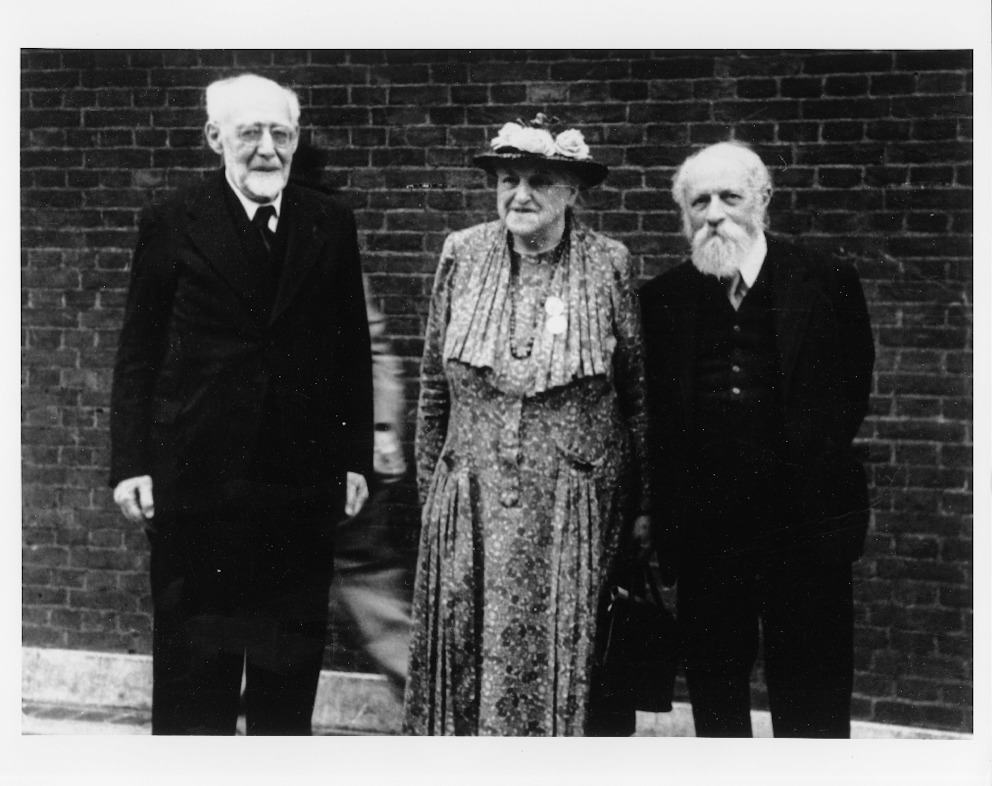
Testing the Jewish Faith
Rabbi Leo Baeck, one of the leaders of the German Jewish community, had been given opportunities to leave Germany, but he insisted on staying with his people. He was arrested twice by the Nazis for his attempts to defend the rights of the Jewish people. When he was deported to the Terezin Ghetto near Prague in 1943, his faith and that of many other religious Jews was severely tested.
In Terezin, Rabbi Baeck continued as a spiritual leader, speaking frequently to fellow inmates on religious and philosophical subjects. After hours of hard forced labor, Rabbi Baeck would often teach classes to keep inmates’ minds active. His eloquence, commanding physical presence, and firm ethical example amid evil and brutality made a major contribution to the morale of the ghetto population.
Terezin was the opposite of a paradise, and yet a kind of miracle of faith and humanity unfolded there. Rabbi Baeck and other leaders helped organize a rich cultural life. Small rooms in some of the barracks were set up as synagogues, where Rabbi Baeck and others presided over religious services on Sabbath and holidays, and even for bar mitzvahs. These rituals were of enormous personal and communal importance during the Holocaust.
Celebrating Purim
In a hidden bunker beneath a trapdoor, Rabbi Baeck celebrated Purim in the traditional manner by reading from the scroll, or megillah, of Esther. This biblical text tells the story of the courageous and beautiful Queen Esther, who persuades Ahasuerus, a king of ancient Persia, to reverse his genocidal minister Haman’s plan to annihilate the Jews of his kingdom. The megillah’s story of the ultimate rescue of the Jews of ancient Persia was a message the Terezin inmates suffering under the Nazis could translate into their own terms.
The Oral Agreement
When the Soviet army finally liberated Terezin on May 8, 1945, Rabbi Baeck was evacuated to London to join the few surviving members of his family. Six weeks after the liberation of Terezin, Rabbi Eugene Lipman, an American army chaplain, arrived at the ghetto with the troops who were ordered to dismantle it.
“My father was leaving with the final truck,” said Rabbi Lipman’s son, David, remembering the story he had heard, “when one of the survivors asked him to wait. He went into the bunker and brought out the megillah and gave it to my father.” Rabbi Lipman was asked to convey the sacred scroll to Rabbi Baeck.
When Rabbi Lipman found Rabbi Baeck in London, he offered him the scroll. Leo Baeck gave it back, stating that he no longer had a congregation. “I am giving it to you to make sure it will be read every year.”
Keeping the Tradition Alive
Rabbi Lipman honored Rabbi Baeck’s request at his synagogue in the Washington, D.C., area, where he served from 1945 to 1987. When he retired, he passed the megillah along to his son, David, also a rabbi, who has used it with his congregation.
The megillah is on exhibition at the Museum for eleven months of the year. However, every Adar, the Hebrew month in which Purim falls, the scroll is returned to Rabbi Lipman’s congregation to be read. As the text is publicly chanted, congregants hear what happened in ancient Persia but are also reminded of what occurred in Terezin between 1941 and 1945.
Rabbi Lipman has said, “It has to be handed down to the next rabbi,” who will also read it in front of his congregation. By doing this, he honors the oral agreement made between his father and Leo Baeck more than half a century ago, ensuring the megillah read in Terezin continues to be read out loud on Purim.
